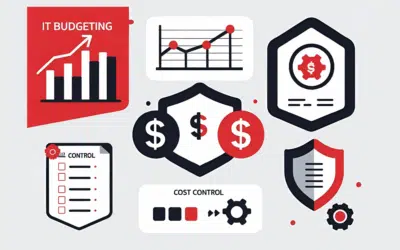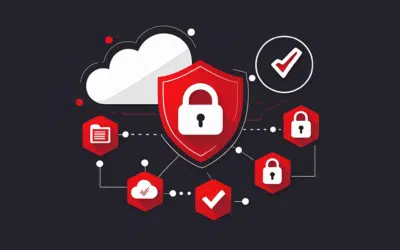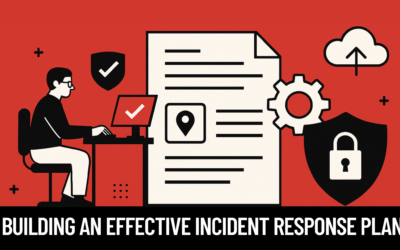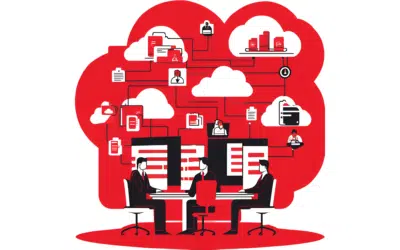 How many emails are sitting in your inbox right now? Dozens? Hundreds? Thousands? According to a study by the Radicati Group, the typical corporate email user sends and receives about 105 email messages daily. Sorting all this information can be a real-time suck.
How many emails are sitting in your inbox right now? Dozens? Hundreds? Thousands? According to a study by the Radicati Group, the typical corporate email user sends and receives about 105 email messages daily. Sorting all this information can be a real-time suck.
As a result, many people’s inboxes become de facto storage bins that contain every email they’ve ever received because a) they’re afraid to delete and b) they don’t really know where to file them.
“Managing” your inbox this way can easily let important emails and tasks get buried. It contributes to the digital and mental clutter that can drag down your productivity. And it’s harder to quickly locate information you do need when you’re sorting through mountains of messages that you don’t. It’s time to show your inbox who’s the real boss.
Trust in text search
The first step to getting your inbox under control is to get all that junk out of there. You don’t necessarily have to delete it. You don’t even need to sort it. (Trying to sort your historical correspondence would be time prohibitive.) Just go, say three months back, and move the entire bulk into a “saved” folder.
Most email platforms include a full-text search function that will help you find that one email you might be looking for. Some platforms even allow you to tag and rank emails according to topic or importance. Use these tools if they’re helpful, but limit use to important emails only. There’s just no reason to tag and rank the minor emails that land in your inbox.
Once the initial clutter is out of your inbox, determine what management strategy you’d like to use moving forward. Maybe you like to set up basic project folders to keep related emails all in one place. Maybe you just pass everything to the “saved” folder once you’re done with it. The general wisdom that has emerged from a number of user studies is: the fewer folders the better.
Is it ever safe to delete?
A classic fear-based human resources rule of thumb is to save everything, because you never know when you may need to prove or back something up. Today’s minimal cost of data storage along with simple search capabilities built into most email platforms make saving everything pretty easy and cheap. In addition, certain industries have specific record-retention policies that may include email messages. So saving everything feels like a safe policy for most professionals.
On the other hand, the amount of digital information we create, send and consume will only grow. Sure, we can store all our emails now, but what about five years from now? Won’t it get harder to find things through search as the amount of information we’re storing grows? And what about the burden this places on IT and storage architectures?
Bottom line: you should delete at your own discretion, according to your comfort level and your company’s retention policies. However, filtering through some of the more obviously unneeded emails is a good idea in the long term. Here are a few email types can be safely deleted:
- Conversation chains: You only need to save the topmost email from a conversation chain because the earlier responses will be included as threads in the body of the topmost email. Delete earlier responses and only save the most recent, which will typically include the resolution of the conversation as well.
- Redundant info: If the email contains information that can be found elsewhere, there’s no reason to save it.
- Anything non-work-related: Lunch invitations, jokes, articles people share for personal reasons and so on. Get this clutter out of your inbox STAT.
- Internal communications: Many of the email exchanges you have with your coworkers don’t actually need to be saved. Things like requests for a file location, confirming meeting times, questions on process and so on constitute the typical chatter of a workplace and usually don’t need to be retained. If available, save these types of communications for your company’s internal instant messaging system.
Employing this initial filter will help reduce your inbox to a more manageable size and allow you to more easily locate the emails that are important and require action.
Deploy the four Ds
The classic “four Ds of decision making” can help you triage your inbox items so that you can quickly prioritize, get simple tasks out of the way and keep only the current working items front and center. When addressing your email load at the start of your day, or as they come in, apply the four Ds to determine each email’s fate:
- Delete it. If you don’t need to act on the email and won’t need to refer to it later for any reason, by all means, delete it. (Don’t you feel better already?)
- Do it. If the email calls for a task that can be easily completed within a few minutes, go ahead and do it right then and there. If you need the email as a record of completing the task, file it when you’re done. Otherwise, upon completion, delete it.
- Delegate it. Does it make sense for someone else on your team to complete the task? If so, forward the email to that team member along with your request. Then, either delete or file the email.
- Defer it. If the task can’t be completed in a few minutes or passed on to someone else, then it’s part of your core workload. So, does this mean you leave it sitting in your inbox while you move on to the next email? No! Move it to your task list or turn it into an appointment.
Keep it up
The time to get your inbox in order is now. Applying some discipline and using the tools available to you can help get your inbox under control with minimal stress. But it’s up to you to maintain it.








